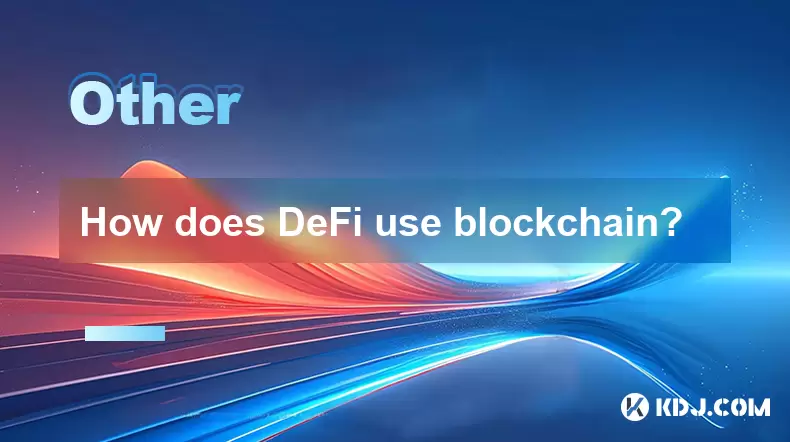-
 Bitcoin
Bitcoin $114400
1.32% -
 Ethereum
Ethereum $3499
2.20% -
 XRP
XRP $2.922
4.26% -
 Tether USDt
Tether USDt $0.0000
0.03% -
 BNB
BNB $752.6
1.53% -
 Solana
Solana $161.8
1.64% -
 USDC
USDC $0.9999
0.01% -
 TRON
TRON $0.3267
1.32% -
 Dogecoin
Dogecoin $0.1991
3.02% -
 Cardano
Cardano $0.7251
3.29% -
 Hyperliquid
Hyperliquid $38.32
3.36% -
 Stellar
Stellar $0.3972
7.58% -
 Sui
Sui $3.437
2.74% -
 Chainlink
Chainlink $16.29
3.65% -
 Bitcoin Cash
Bitcoin Cash $545.3
3.70% -
 Hedera
Hedera $0.2482
7.49% -
 Ethena USDe
Ethena USDe $1.001
0.03% -
 Avalanche
Avalanche $21.40
2.02% -
 Toncoin
Toncoin $3.579
1.56% -
 Litecoin
Litecoin $109.3
2.20% -
 UNUS SED LEO
UNUS SED LEO $8.951
-0.18% -
 Shiba Inu
Shiba Inu $0.00001220
2.75% -
 Polkadot
Polkadot $3.613
2.99% -
 Uniswap
Uniswap $9.173
3.78% -
 Monero
Monero $302.6
2.62% -
 Dai
Dai $0.0000
0.00% -
 Bitget Token
Bitget Token $4.320
1.52% -
 Pepe
Pepe $0.00001048
3.40% -
 Cronos
Cronos $0.1314
4.33% -
 Aave
Aave $259.4
3.54%
How can blockchain games achieve cross-chain interoperability?
Blockchain games use technologies like atomic swaps and cross-chain bridges to enable seamless asset and data transfer across different blockchain networks.
Apr 15, 2025 at 02:56 am

Blockchain games have become increasingly popular in the cryptocurrency ecosystem, offering players the ability to earn digital assets while playing. One of the key challenges these games face is achieving cross-chain interoperability, which allows assets and data to move seamlessly between different blockchain networks. This article explores the various methods and technologies that can be used to enable cross-chain interoperability in blockchain games.
Understanding Cross-Chain Interoperability
Cross-chain interoperability refers to the ability of different blockchain networks to communicate and interact with each other. This is crucial for blockchain games because it allows players to use their assets across multiple platforms and ecosystems. Without interoperability, players would be confined to a single blockchain, limiting the potential for growth and collaboration.
To achieve cross-chain interoperability, developers must address several technical challenges, including the differences in consensus mechanisms, smart contract languages, and data structures between various blockchains. By overcoming these challenges, blockchain games can offer a more integrated and seamless experience for players.
Technologies Enabling Cross-Chain Interoperability
Several technologies and protocols have emerged to facilitate cross-chain interoperability in blockchain games. Some of the most prominent include:
Atomic Swaps: Atomic swaps allow for the direct exchange of cryptocurrencies between different blockchains without the need for intermediaries. This technology can be used in blockchain games to enable players to trade assets across different networks securely and efficiently.
Cross-Chain Bridges: Cross-chain bridges are specialized protocols that connect two or more blockchains, allowing data and assets to be transferred between them. These bridges can be integrated into blockchain games to enable the movement of in-game assets and player data across different blockchains.
Sidechains: Sidechains are separate blockchains that are pegged to a main blockchain, allowing assets to be moved between them. In the context of blockchain games, sidechains can be used to offload certain game functionalities, such as processing transactions, while still maintaining interoperability with the main blockchain.
Interoperability Protocols: Protocols like Cosmos and Polkadot are designed to facilitate interoperability between multiple blockchains. These protocols can be leveraged by blockchain games to create a more interconnected gaming ecosystem, where assets and data can flow freely between different networks.
Implementing Cross-Chain Interoperability in Blockchain Games
To implement cross-chain interoperability in a blockchain game, developers must follow a series of steps. Here is a detailed guide on how to achieve this:
Choose the Right Technology: The first step is to select the appropriate technology or protocol for achieving cross-chain interoperability. This decision will depend on factors such as the specific blockchains involved, the desired level of security, and the scalability requirements of the game.
Integrate the Technology: Once the technology has been chosen, developers must integrate it into the game's architecture. This may involve writing custom smart contracts or using existing interoperability protocols. For example, if using a cross-chain bridge, developers would need to set up the bridge and ensure that it is compatible with the game's blockchain.
Develop Cross-Chain Functionality: After integration, developers must develop the specific cross-chain functionalities required for the game. This could include enabling players to transfer assets between different blockchains, syncing player data across networks, or facilitating cross-chain trading of in-game items.
Testing and Security Audits: Before launching the game, it is crucial to conduct thorough testing and security audits. This ensures that the cross-chain interoperability functions as intended and that there are no vulnerabilities that could be exploited by malicious actors.
Launch and Monitor: Once the game is live, developers must continuously monitor the performance of the cross-chain interoperability features. This includes tracking the flow of assets and data between blockchains, addressing any issues that arise, and ensuring that the overall gaming experience remains smooth and seamless for players.
Benefits of Cross-Chain Interoperability in Blockchain Games
Cross-chain interoperability offers several significant benefits for blockchain games and their players. These include:
Enhanced Asset Liquidity: By allowing assets to be used across multiple blockchains, cross-chain interoperability increases their liquidity. Players can trade and use their in-game assets more freely, leading to a more dynamic and engaging gaming economy.
Improved Player Experience: Interoperability enables a more seamless gaming experience, as players can easily move between different platforms and ecosystems. This reduces friction and enhances the overall enjoyment of the game.
Greater Collaboration Opportunities: With cross-chain interoperability, developers can collaborate more easily with other projects and ecosystems. This can lead to the creation of new game features, partnerships, and cross-promotional opportunities, further enriching the gaming experience.
Increased Scalability: By offloading certain functionalities to sidechains or other blockchains, games can achieve greater scalability. This allows them to handle more players and transactions without compromising performance.
Challenges and Considerations
While cross-chain interoperability offers many benefits, it also comes with its own set of challenges and considerations. These include:
Security Risks: Interoperability introduces new security risks, as assets and data are being transferred between different blockchains. Developers must implement robust security measures to protect against potential attacks and vulnerabilities.
Complexity: Achieving cross-chain interoperability can be technically complex, requiring a deep understanding of multiple blockchains and their respective technologies. This can increase development time and costs.
Regulatory Compliance: As assets move across different blockchains, developers must ensure that they comply with relevant regulations in each jurisdiction. This can be a challenging and ongoing process.
User Education: Players may need to be educated on how to use cross-chain features effectively. This requires clear communication and user-friendly interfaces to ensure that players can take full advantage of the interoperability capabilities.
Frequently Asked Questions
Q: Can cross-chain interoperability be achieved without using third-party protocols?
A: While third-party protocols like Cosmos and Polkadot offer robust solutions for cross-chain interoperability, it is possible to achieve interoperability without them. Developers can use technologies like atomic swaps or build custom cross-chain bridges tailored to their specific needs. However, these approaches may require more development effort and could be less scalable than established protocols.
Q: How does cross-chain interoperability affect the value of in-game assets?
A: Cross-chain interoperability can potentially increase the value of in-game assets by enhancing their liquidity and utility. When assets can be used across multiple blockchains, they become more versatile and accessible to a broader audience. This increased demand can drive up their value, benefiting players and developers alike.
Q: Are there any successful examples of blockchain games with cross-chain interoperability?
A: Yes, several blockchain games have successfully implemented cross-chain interoperability. For instance, games built on the Ethereum blockchain have used bridges to connect with other networks like Binance Smart Chain, allowing players to transfer assets between the two. Another example is games using the WAX blockchain, which has built-in interoperability features that enable asset transfers to and from other blockchains.
Q: How can developers ensure the security of cross-chain transactions in blockchain games?
A: To ensure the security of cross-chain transactions, developers should implement several measures. These include using secure cryptographic techniques, conducting regular security audits, and employing multi-signature wallets for asset transfers. Additionally, developers can use smart contract verification tools to ensure that the contracts governing cross-chain interactions are secure and free from vulnerabilities.
Disclaimer:info@kdj.com
The information provided is not trading advice. kdj.com does not assume any responsibility for any investments made based on the information provided in this article. Cryptocurrencies are highly volatile and it is highly recommended that you invest with caution after thorough research!
If you believe that the content used on this website infringes your copyright, please contact us immediately (info@kdj.com) and we will delete it promptly.
- Bitcoin Price Wobbles: Options Analysis Points to Bullish Undercurrent Despite Dip
- 2025-08-04 04:30:12
- Ark Invest, Coinbase, and Bitcoin: Decoding the Crypto Investment Landscape in NYC
- 2025-08-04 04:30:12
- Ruvi AI: CoinMarketCap Listing and Audited Token Status Spark Investor Frenzy
- 2025-08-04 05:30:12
- BlockDAG, Cryptos 2025, and Live Exchange: What's Hot and What's Not
- 2025-08-04 05:50:11
- BlockDAG, TON, and Dogecoin: Riding the Crypto Wave with Innovation and Hype
- 2025-08-04 05:35:12
- LILPEPE, Cardano, and Shiba Inu: The 2025 Crypto Landscape
- 2025-08-04 04:50:12
Related knowledge

What is the difference between on-chain and off-chain transactions?
Aug 02,2025 at 04:22pm
Understanding On-Chain TransactionsOn-chain transactions refer to digital asset transfers that are recorded directly on a blockchain ledger. These tra...

What is a node's role in a blockchain network?
Aug 03,2025 at 03:16pm
Understanding the Function of a Node in a Blockchain NetworkA node is a fundamental component of any blockchain network, acting as a participant that ...

How are transactions verified on a blockchain?
Aug 04,2025 at 12:35am
Understanding the Role of Nodes in Transaction VerificationIn a blockchain network, nodes are fundamental components responsible for maintaining the i...

What is the double-spending problem and how does blockchain prevent it?
Aug 02,2025 at 01:07pm
Understanding the Double-Spending ProblemThe double-spending problem is a fundamental challenge in digital currency systems where the same digital tok...

What is the difference between a blockchain and a database?
Aug 01,2025 at 09:36pm
Understanding the Core Structure of a BlockchainA blockchain is a decentralized digital ledger that records data in a series of immutable blocks linke...

How does DeFi use blockchain?
Aug 03,2025 at 11:15pm
Understanding the Role of Blockchain in DeFiDecentralized Finance (DeFi) relies fundamentally on blockchain technology to operate without intermediari...

What is the difference between on-chain and off-chain transactions?
Aug 02,2025 at 04:22pm
Understanding On-Chain TransactionsOn-chain transactions refer to digital asset transfers that are recorded directly on a blockchain ledger. These tra...

What is a node's role in a blockchain network?
Aug 03,2025 at 03:16pm
Understanding the Function of a Node in a Blockchain NetworkA node is a fundamental component of any blockchain network, acting as a participant that ...

How are transactions verified on a blockchain?
Aug 04,2025 at 12:35am
Understanding the Role of Nodes in Transaction VerificationIn a blockchain network, nodes are fundamental components responsible for maintaining the i...

What is the double-spending problem and how does blockchain prevent it?
Aug 02,2025 at 01:07pm
Understanding the Double-Spending ProblemThe double-spending problem is a fundamental challenge in digital currency systems where the same digital tok...

What is the difference between a blockchain and a database?
Aug 01,2025 at 09:36pm
Understanding the Core Structure of a BlockchainA blockchain is a decentralized digital ledger that records data in a series of immutable blocks linke...

How does DeFi use blockchain?
Aug 03,2025 at 11:15pm
Understanding the Role of Blockchain in DeFiDecentralized Finance (DeFi) relies fundamentally on blockchain technology to operate without intermediari...
See all articles

























































































